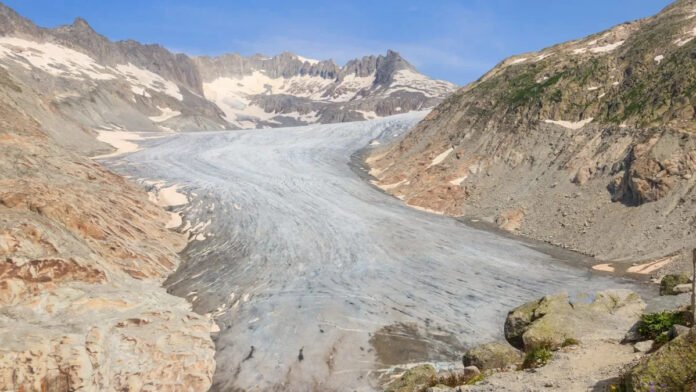Scientists tracking the loss of glaciers in the Swiss Alps have uncovered an alarming development regarding their disappearance, and it could have devastating implications for the future.
What’s happening?
Most discussions about the loss of glaciers tend to focus on the polar ice caps, but Switzerland is rightly regarded as the undisputed European capital of glaciers. There are around 1,400 glaciers in the landlocked European nation that provide drinking water and irrigation for millions. As global temperatures rise, they’re disappearing at an unsustainable rate. The Associated Press reported that 1,000 smaller glaciers have been lost, and things don’t look better for the larger ones.
Scientists tracking the glaciers are drilling holes to gain further insights, and they have uncovered an alarming detail. Typically, a glacier melts from the top, but as glaciologist Matthias Huss of the Federal Institute of Technology in Zurich explained, they’re also disappearing from the bottom.
“In recent years we realized at several sites that there is a substantive melt from the bottom,” he said. “If there are some channels in the ice through which air is circulating, this can excavate big holes under the ice.”
Why is glacier loss so significant?
Losing glaciers is bad enough, but the nature of the melt means there’s another danger, and it has already occurred. In May, ancient ice from the Birch Glacier gave way, and Blatten, a tiny mountainside village, was destroyed in an instant. Fortunately, residents were evacuated ahead of time, but a village that had existed for 800 years is no more. Without action, many more homes could be lost forever.
Up to two-thirds of the world’s glaciers could be lost by the end of the century as the planet heats up from the use of dirty energy. Extreme weather events will become ever more common and destructive as a result.
Watch now: Giant snails invading New York City?
What’s being done to protect glaciers?
In the short term, the researchers are employing giant sheets to cover the glaciers and slow down the melt. In the long term, it’s vital to bring down planet-heating pollution. Switzerland has made progress in this regard; the International Energy Agency reports the country has reduced its carbon dioxide emissions 24% since 2000, but more aggressive adoption of clean energy is needed worldwide.
As Huss noted, Blatten’s fate serves as a crucial warning of the dangers ahead and the importance of staying informed on the issues.
“I think this is the main lesson to be learned, that we need to be prepared,” he said.
Join our free newsletter for good news and useful tips, and don’t miss this cool list of easy ways to help yourself while helping the planet.
